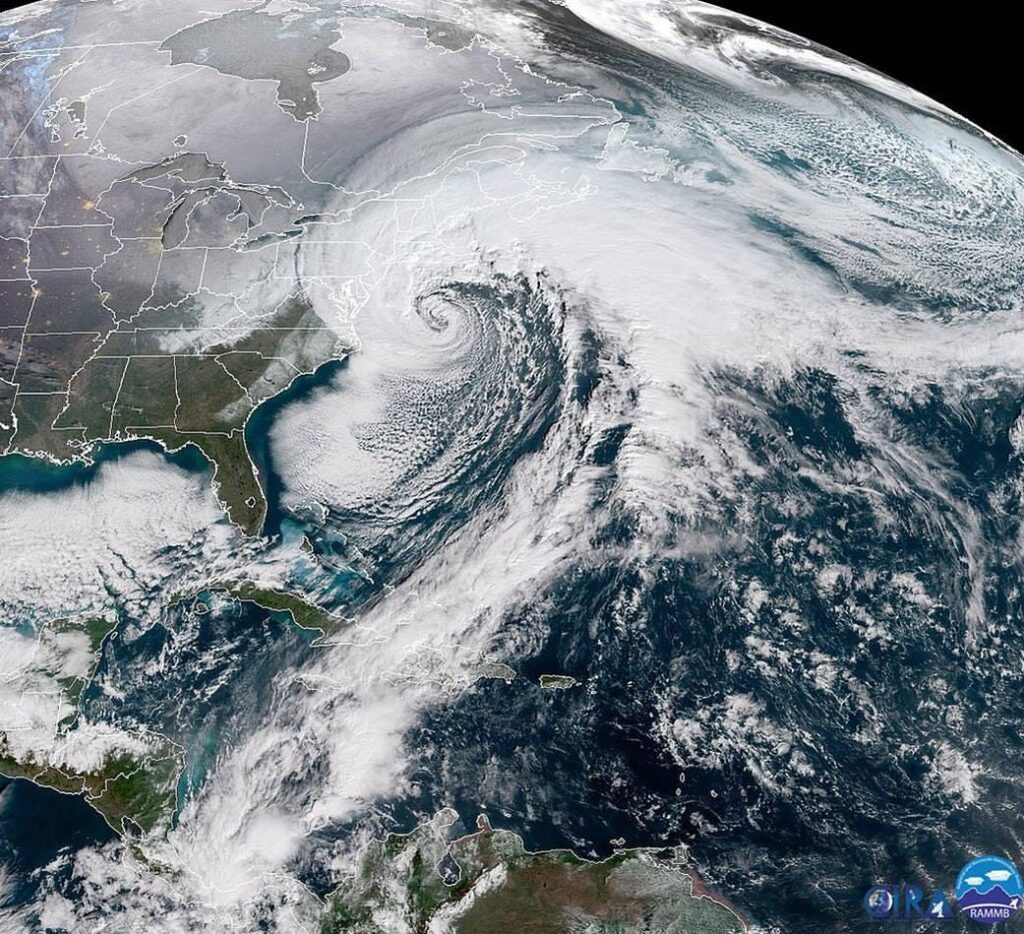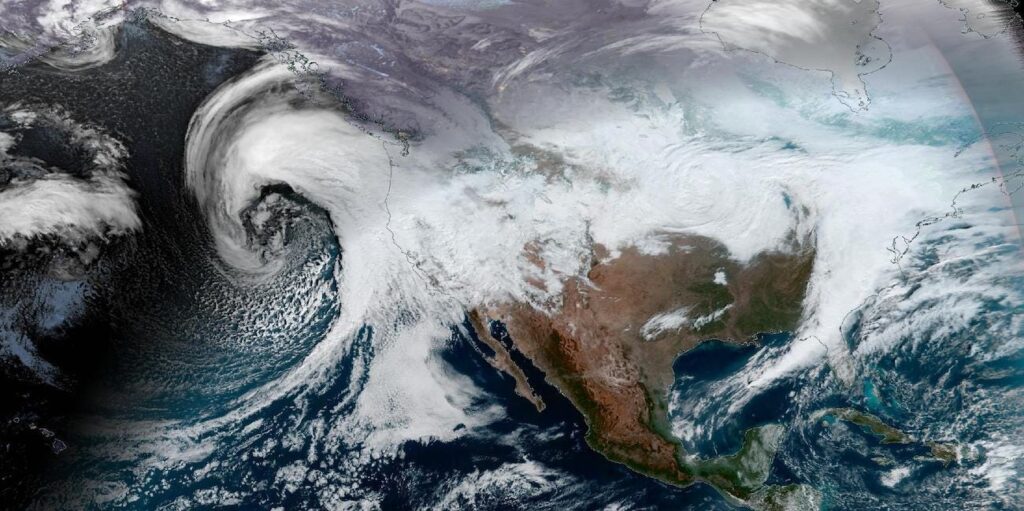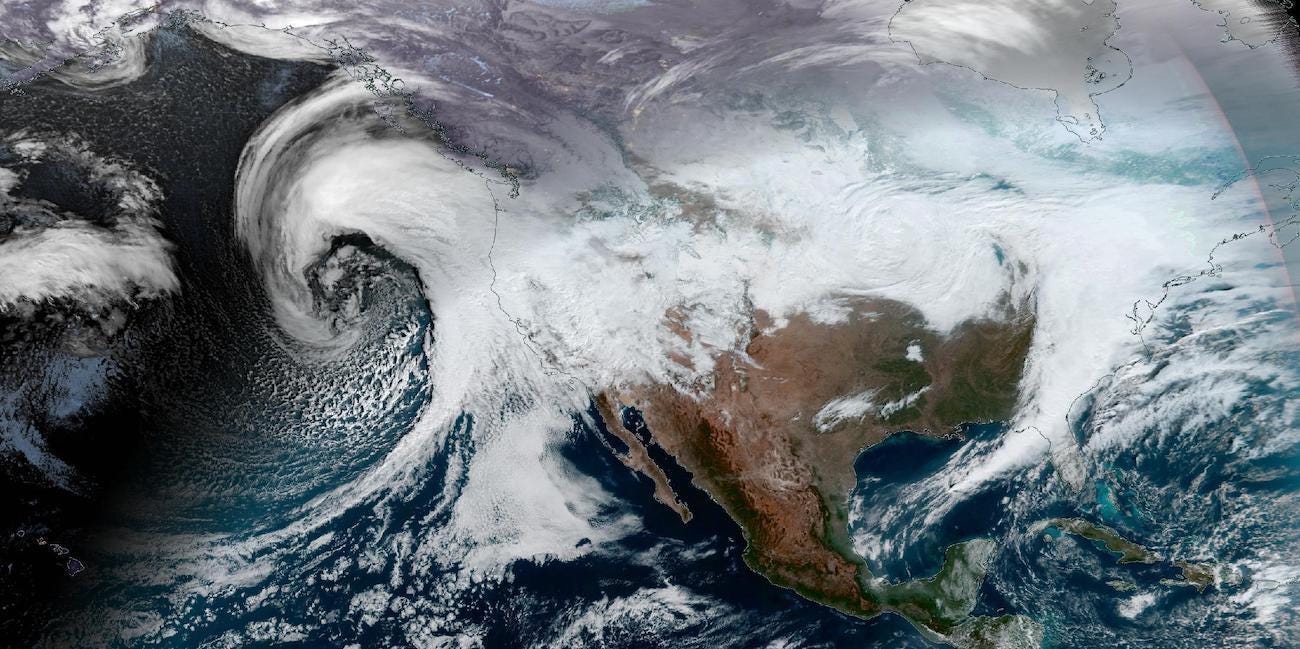From a meteorological perspective, a bomb cyclone really is the bomb. These rapidly strengthening extratropical cyclones are responsible for extreme storms that can cause intense snowfall, high winds, and flooding. They’re defined by a precipitous drop in atmospheric pressure of at least 24 millibars in 24 hours.
“When a cyclone ‘bombs,’ or undergoes bombogenesis, this tells us that it has access to the optimal ingredients for strengthening, such as high amounts of heat, moisture and rising air,” writes Esther Mullens of the University of Florida. “Most cyclones don’t intensify rapidly in this way. Bomb cyclones put forecasters on high alert, because they can produce significant harmful impacts.”
The term was coined in 1980 by MIT meteorologists Frederick Sanders and John R. Gyakum. In 2018, Gyakum told The Washington Post the name “isn’t an exaggeration — these storms develop explosively and quickly.”
We often hear about bomb cyclones hitting the Eastern Seaboard, where they can draw on the relatively warm waters of the Gulf Stream. The satellite image below shows a classic bomb cyclone. This event was also described as a Nor’easter—a storm along the East Coast characterized by strong northeast winds and heavy precipitation—but not all Nor’easters are bomb cyclones.

Bombogenesis can also occur in the middle of the country or along the West Coast, as shown by the image below.


See the video below from The New York Times for a visual explainer of bomb cyclones.



